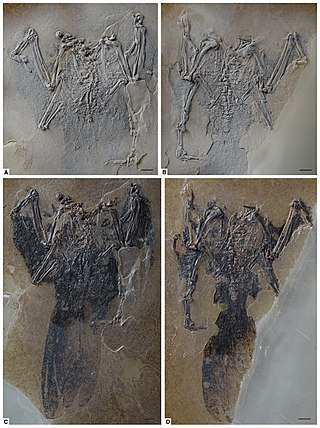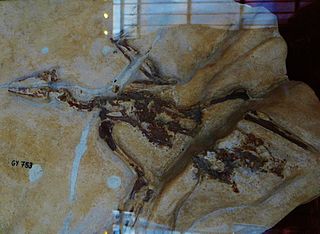
Barn-owls are one of the two families of owls, the other being the true owls or typical owls, Strigidae. They are medium to large owls with large heads and characteristic heart-shaped faces. They have long, strong legs with powerful talons. They also differ from the Strigidae in structural details relating in particular to the sternum and feet.

The Coraciiformes are a group of usually colourful birds including the kingfishers, the bee-eaters, the rollers, the motmots, and the todies. They generally have syndactyly, with three forward-pointing toes, though in many kingfishers one of these is missing. The members of this order are linked by their “slamming” behaviour, thrashing their prey onto surfaces to disarm or incapacitate them.

Traditionally, the bird order Apodiformes contained three living families: the swifts (Apodidae), the treeswifts (Hemiprocnidae), and the hummingbirds (Trochilidae). In the Sibley-Ahlquist taxonomy, this order is raised to a superorder Apodimorphae in which hummingbirds are separated as a new order, Trochiliformes. With nearly 450 species identified to date, they are the most diverse order of birds after the passerines.

Strigogyps is an extinct genus of prehistoric bird from the Middle Eocene to Early Oligocene of France and Germany. It was probably around the size of a large chicken or a guan, weighing not quite 1 kilogram (2.2 lb). Apparently, as indicated by the ratio of lengths of wing to leg bones, S. sapea was flightless. Its legs were not adapted to running, so it seems to have had a walking lifestyle similar to trumpeters. Unlike other Cariamiformes, which appear to have been mostly carnivorous, Strigogyps specimens suggest a herbivorous diet.
Storrs Lovejoy Olson was an American biologist and ornithologist who spent his career at the Smithsonian Institution, retiring in 2008. One of the world's foremost avian paleontologists, he was best known for his studies of fossil and subfossil birds on islands such as Ascension, St. Helena and Hawaii. His early higher education took place at Florida State University in 1966, where he obtained a B.A. in biology, and the University of Florida, where he received an M.S. in biology. Olson's doctoral studies took place at Johns Hopkins University, in what was then the School of Hygiene and Public Health. He was married to fellow paleornithologist Helen F. James.

Archaeotrogonidae is a prehistoric bird family known from the Eocene and Oligocene of Europe. They are members of Strisores, and are thought to be closely related to nightjars.
Paleontology or palaeontology is the study of prehistoric life forms on Earth through the examination of plant and animal fossils. This includes the study of body fossils, tracks (ichnites), burrows, cast-off parts, fossilised feces (coprolites), palynomorphs and chemical residues. Because humans have encountered fossils for millennia, paleontology has a long history both before and after becoming formalized as a science. This article records significant discoveries and events related to paleontology that occurred or were published in the year 1989.
Paleontology or palaeontology is the study of prehistoric life forms on Earth through the examination of plant and animal fossils. This includes the study of body fossils, tracks (ichnites), burrows, cast-off parts, fossilised feces (coprolites), palynomorphs and chemical residues. Because humans have encountered fossils for millennia, paleontology has a long history both before and after becoming formalized as a science. This article records significant discoveries and events related to paleontology that occurred or were published in the year 1993.
Paleontology or palaeontology is the study of prehistoric life forms on Earth through the examination of plant and animal fossils. This includes the study of body fossils, tracks (ichnites), burrows, cast-off parts, fossilised feces (coprolites), palynomorphs and chemical residues. Because humans have encountered fossils for millennia, paleontology has a long history both before and after becoming formalized as a science. This article records significant discoveries and events related to paleontology that occurred or were published in the year 1973.
Paramiacis is an extinct genus of placental mammals from clade Carnivoraformes, that lived in Europe from the middle to late Eocene. Species P. exilis and P. teilhardi were long believed to be the same species, with differences that were only represented as an example of sexual dimorphism.

Palaeoglaux is a genus of fossil owls from the Eocene epoch. The two known species are P. perrierensis from the Upper Eocene of Quercy, France, and P. artophoron from the Middle Eocene Messel shales, Germany. The holotype of P. perrierensis is a partial left coracoid in the Collection Université Montpellier, accession number PRR 2585. The four paratypes are the distal part of a left humerus (PRR2591), the proximal part of a left ulna, the distal part of a left ulna, and the distal part of a right tarsometatarsus. The type specimen of P. artophoron is a fossil slab and counterslab containing most of the postcranial skeleton and some feather impressions. This specimen is in the collection of the Forschunginstitut Senckenberg, accession number SMF-ME 1144 A and B.

Palaeortyx is an extinct genus of granivorous galliform bird that lived 28.4 to 2.588 million years ago. It lived from the early Eocene to the early Pliocene, and may be a phasianid or odontophorid. It is known from several fossils found in Germany, France, Italy, Hungary and Romania.
Pyrenasaurus is an extinct genus of lizard that includes only one species, the type species Pyrenasaurus evansae, which lived around the Pyrenees mountains during the Late Eocene. P. evansae was named in 2014 on the basis of three dentaries, one from the Phosphorites du Quercy in Quercy, France and two from the Sossís fossil locality in Catalonia, Spain. The paucity of known material makes its relationships uncertain; it is either a true skink in the family Scincidae or a close relative of skinks in the larger group Scincoidea. Pyrenasaurus is very small for a lizard, with a dentary length of only 3.4 millimetres (0.13 in). It also has very few teeth for a lizard, with only eleven tooth positions in the dentary. Other unusual anatomical features include the shortness straightness of the jaw, the lack of a Meckelian groove on the inside of the dentary, and the enlargement and lateral compression of the posterior-most dentary teeth. Pyrenasaurus may have been a fossorial or burrowing lizard because a short, straight dentary with few teeth is also present in numerous living fossorial lizards, having evolved independently in many lineages. However, the extremely small size of Pyrenasaurus may have inhibited its ability to burrow. The enlarged posterior teeth of Pyrenasaurus suggest it had a specialized diet, but what it was eating remains unknown because no living lizards have similar dentitions.
The Quercy Phosphorites Formation is a geologic formation and lagerstätte in Occitanie, southern France. It preserves fossils dated to the Paleogene period, or MP16 to MP28 zones of the European land mammal age classification, ranging from approximately 38 to 25 Ma.

Necromantis is an extinct genus of bat that lived during the Eocene. Its fossils are found in the Quercy Phosphorites Formation of France and the Djebel Chambi in Tunisia. Specimens of Necromantis are notable for their large size and specialization towards a predatory lifestyle.
Elaphrocnemus is a genus of extinct bird from the Eocene and Oligocene periods of Europe. Part of Cariamiformes, its closest living relatives are seriemas, though it differs significantly from them, being a better flyer.
Vastanavis is a genus of parrot-like bird that lived in what is now western India in the Early Eocene. It contains two species, Vastanavis eocaena and Vastanavis cambayensis; both are known from the Cambay Formation. Vastanavis was at least semi-zygodactyl, and most likely arboreal.
Vastanavidae is an extinct family of birds related to parrots and passerine birds. They are known from fossils from Eocene sites in India, Europe, and North America. The vastanavids resemble parrots and the extinct parrot relative Quercypsitta in their morphology, including the partially zygodactyl foot, in which two toes could face opposite the other two.

Palaeovaranidae, formerly known as Necrosauridae, is an extinct clade of anguimorph lizards known from the Paleogene of Europe. They have sometimes been recovered as members of Varanoidea. It contains three genera.

Thaumastosaurus is an extinct genus of frogs in the family Pyxicephalidae. Five species are known, all from the Eocene of western Europe, including France, England, and Switzerland. Specimens of the species T. gezei from the Quercy Phosphorites of France are known for their exceptional preservation, providing three-dimensional images of the animal's life appearance.









